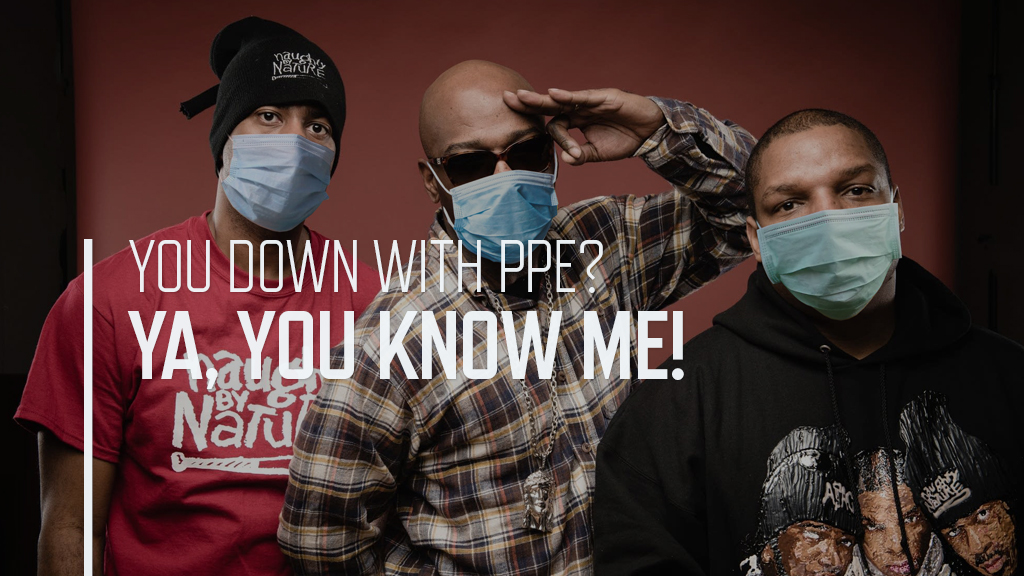How wearing a mask and these 7 other solutions can get us back to enjoying live events!
People want to find some form of normality after having concerts and events wiped off their calendar this summer. As event producers and consultants, we feel that pain and can’t wait until we are able to gather again in a safe and controlled way. One way we can all do our part is by wearing a mask. If everyone would agree to wear a mask to events, this would significantly cut down the chances of people in attendance transmitting or catching COVID-19 (or any other virus for that matter). Also think about all of the cool new artist merch that will be out...I can’t wait to get my Guns N’ Roses tour mask! Here are 7 other solutions that will get us back to enjoying shows in a safe and controlled environment.
1. Staggered Admission
Like reserving a table at a restaurant, you can now reserve your spot in line for arriving at an event. By booking your time slot, we are controlling the flow of people coming to the entrance of an event at any given time and help create more physical distancing as you enter.
2. Health Screening
As part of your admission process you should expect things to happen slower because there are many more steps involved to ensure things are handled as safe as possible, which includes health screenings during event admission. It will be 2 parts; a temperature check and a health survey. If you don’t pass either of these screenings, you will go into a separate area for a secondary assessment with health experts to determine next steps.
3. Contact Tracing
When purchasing a ticket it is going to be very important to give your correct personal contact information in the event there is a positive test by someone at the event. This will help us work with local health authorities to lessen the possibility of a further outbreak. As we strive to have zero transmissions, there is always the possibility of something happening that is out of anyone's control. Having the tools tied in with detailed contract tracing, we are able to isolate contacts that were near the infected person(s). It will become more common to have the information of not just the ticket purchaser, but all ticket holders. You can also take it a step further and download a local contact tracing app to your phone from your local health authority.
4. Physical Distancing
We have heard the terms “physical distancing” and "social distancing" every day for the last 4-5 months. What does this actually mean in an event setting? We can’t put all the onus on attendees to stay 2 meters or 6 feet apart, it will also be up to organizers and facility managers to re-think the consumer experience and walk through every possible interaction at a venue. In most cases we will have to look at a reduction of capacity. We can also re-look what a traditional venue may look like and use space adjacent to it to expand the footprint and make room for the amount of increased services.
5. Reserved Cohort Seating
If we expect physical distancing to work, we need to make sure we as event organizers have a safe, easy to understand distancing plan for event attendees to follow. We have looked at many different ways to seat people in reserved cohort groups of 2, 4 or 6 people. Some of those include Social Circles, Inside-The-Box Seating, and Tetris Seating.
6. Personal Hygiene & Hand Washing
You have heard it a million times so we won’t repeat it...but please, do your part.
7. Testing!!!
If your jurisdiction has the capabilities and testing capacity, then take a test 3-5 days before the event and the day after the event. Even if 99% of you end up with a negative test, it will be good to find out if someone brought in or left an event with COVID and we as organizers can work with health authorities to reduce the risk of spread past that.
It’s everyone's responsibility to work together so we can get concerts and events up and running in a safe manner. We do realize that attending an event during these times is not for everyone and we certainly respect that. Part of respecting that and everyones safety is when we have the opportunity to put on events, they have multiple risk mitigation factors in place that make the chances of transmission for COVID-19 extremely small when done correctly!
For a more in-depth look at how we can get back to producing and enjoying live concerts and festivals again, please download the free eBook below!
The New Fanscape: When Festivals & Events Reopen, What Must We Do Differently?


